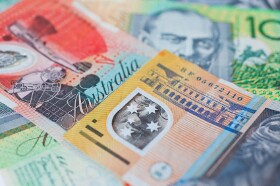The Australian dollar plunged to the lowest level in more than a decade against a range of currencies today but now is trying to recover. As was expected, the Reserve Bank of Australia announced additional monetary stimulus. Meanwhile, employment data showed surprisingly good results.
The RBA announced another 25 basis point interest rate cut to 0.25%. Such a move was widely expected by market participants. Furthermore, the central bank pledged to keep rates low for as long as necessary:
The Board will not increase the cash rate target until progress is being made towards full employment and it is confident that inflation will be sustainably within the 2â3 per cent target band.
The bank also announced a quantitative easing program. Instead of targeting a specific size of asset purchases, though, the RBA was targeting a 0.25% yield for 3-year bonds. The bank stressed that it will be purchasing bonds and securities “across the yield curve”, not just shorter-term ones. On top of that, the central bank introduced a funding facility for banks, aimed to support credit to small and medium-sized businesses.
Meanwhile, the Australian Bureau of Statistics reported that employment increased by 26,700 in February, massively exceeding the forecast increase of 8,700. Gains were registered in both full-time and part-time employment. The unemployment rate fell unexpectedly from 5.3% to 5.1%.
AUD/USD fell from 0.5785 to 0.5729 as of 9:14 GMT today, falling to the low of 0.5507 earlier — the lowest level since October 2002. EUR/AUD edged up from 1.8844 to 1.8970 but retreated from the daily high of 1.9791 — the highest level since March 2009. AUD/JPY was trading at about 62.40, near its opening level of 62.45, after sinking to 59.86 — the low not seen since February 2009.
If you have any questions, comments, or opinions regarding the Australian Dollar, feel free to post them using the commentary form below.
